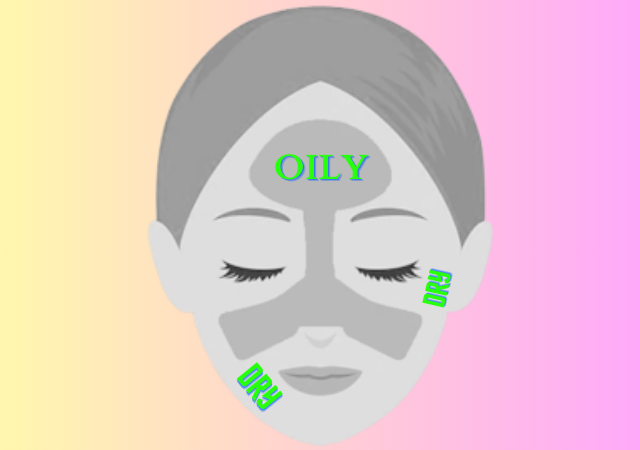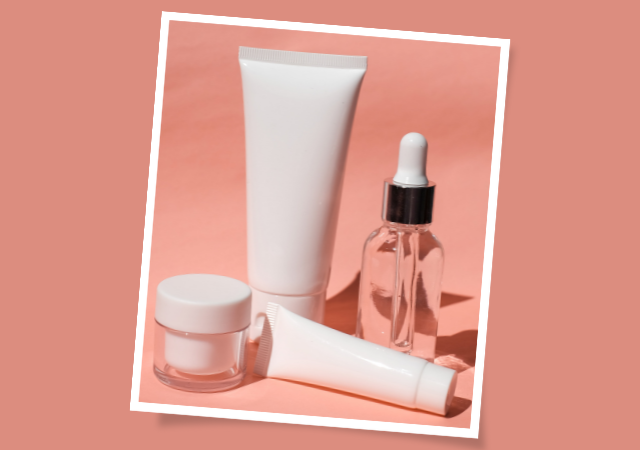No More Skin Confusion! Get the Perfect Routine for Combination Skin NOW!
Introduction
Do you often find yourself frustrated and perplexed by your skin’s behavior? One day it’s oily, the next it’s dry – it’s the classic struggle of dealing with combination skin. But fear not, for you are not alone in this battle. The good news is that it’s entirely possible to achieve a radiant complexion by understanding and mastering the art of combination skin care. In this article, we will guide you through the process of creating the perfect skincare routine for combination skin. Say goodbye to the days of skin confusion and hello to a radiant, balanced complexion.
Understanding the Challenge

Combination skin is characterized by the coexistence of both oily and dry areas on your face. Typically, the T-zone (forehead, nose, and chin) tends to be oily, while the cheeks may lean toward dryness. This unique combination presents a skincare challenge because products designed for oily or dry skin alone may not work for you. To conquer this challenge, you need a routine that specifically addresses the distinct needs of different areas of your face.
The Factors Behind Combination Skin
Understanding the causes of combination skin is the first step toward creating an effective routine. Several factors can contribute to this skin type:
1. Genetics
Your genetic makeup plays a significant role in determining your skin type. If your parents or grandparents had combination skin, you’re more likely to inherit it. Genetic factors influence the production of oil and moisture in your skin.
2. Hormonal Changes
Hormones play a critical role in skin behavior. Fluctuations in hormone levels, such as those experienced during puberty, pregnancy, or menopause, can lead to combination skin. Hormones affect the oil production and hydration levels of your skin.
3. Environmental Factors
External elements, like climate and pollution, can impact your skin’s behavior. Living in a humid environment can exacerbate oiliness, while cold and dry weather can make your skin feel drier. Exposure to pollutants and UV rays can also affect your skin’s health.
Identifying Your Skin Type

Before you can create the perfect routine for combination skin, you need to identify your specific type. Here are two simple methods to help you determine if you have combination skin:
1. The Blotting Paper Test
This quick and easy test involves blotting different areas of your face with blotting paper or a tissue. Pay attention to how much oil is absorbed. Typically, if the paper picks up more oil in the T-zone and less on the cheeks, you likely have combination skin.
2. Observing Shine and Dryness
Throughout the day, observe how your skin feels and looks. Oily areas will appear shiny and may feel greasy, while dry areas can become tight and flaky. By recognizing the variations in shine and dryness, you can get a better sense of your skin’s combination type.
If you’re still uncertain about your skin type or have concerns about its health, consider consulting a dermatologist. They can provide professional insight and recommend tailored products and treatments.
Building the Right Skincare Routine

Now that you’ve identified your combination skin type, it’s time to build a customized skincare routine that caters to its unique needs. Here’s how to create the perfect routine:
1. Cleansing
Choosing the Right Cleanser: Start your routine with a gentle, sulfate-free cleanser. Look for a product that can effectively remove excess oil from the T-zone without over-drying the cheeks.
Cleansing Frequency: Cleanse your face twice a day – in the morning and before bedtime. Avoid excessive washing, as it can strip your skin of essential moisture.
2. Exfoliation
Exfoliation is essential for removing dead skin cells, preventing clogged pores, and promoting a healthy glow. For combination skin, consider using chemical exfoliants like salicylic acid, which can penetrate oily areas and help control shine while being gentle on dry areas.
3. Hydration
Moisturizers for Combination Skin: Choose a lightweight, non-comedogenic moisturizer. Apply a bit more on the drier areas while using a lighter touch on the oily zones.
Importance of Hydration: Moisturizing is crucial for maintaining skin health, even in oily areas. It helps balance oil production and keeps dry areas supple.
4. Sunscreen
Regardless of your skin type, sunscreen is a non-negotiable step in your skincare routine. Look for a broad-spectrum, SPF 30 or higher sunscreen and apply it daily to protect your skin from harmful UV rays.
Selecting the Right Sunscreen: Opt for a sunscreen that is oil-free or designed for sensitive skin. This will help avoid clogging pores in your T-zone while providing essential protection.
5. Special Treatments
For targeted concerns, consider including specific treatments in your routine.
Retinol and Antioxidants: These ingredients can benefit both oily and dry areas by promoting collagen production and minimizing signs of aging.
Targeted Treatments: You can use spot treatments or serums to address specific concerns in particular areas, such as acne or dry patches.
6. Lifestyle Factors
Your lifestyle habits also affect your skin. Factors like diet, hydration, and stress management play significant roles in maintaining skin health. A balanced diet, drinking enough water, and managing stress can contribute to clearer and healthier skin.
Day and Night Skincare Routines

To effectively manage combination skin, you should have separate skincare routines for the morning and evening. Here’s a breakdown of both:
Morning Routine
- Cleansing: Start with a gentle cleanse to remove impurities and prepare your skin for the day.
- Toning: Use a gentle, hydrating toner to balance your skin’s pH levels.
- Hydrating: Apply your lightweight moisturizer and focus more on dry areas.
- Sunscreen: Finish with a broad-spectrum sunscreen to protect your skin from UV rays.
Evening Routine
- Cleansing: Begin with a thorough cleanse to remove makeup and impurities.
- Exfoliation: Exfoliate using your chosen chemical exfoliant. Avoid physical scrubs, as they can be too harsh for combination skin.
- Targeted Treatments: Apply any serums or spot treatments for specific concerns.
- Moisturizing: Use your moisturizer, focusing on dry areas.
By following these tailored day and night routines, you’ll be better equipped to manage combination skin effectively.
Tips and Tricks

Dealing with Fluctuations
- Seasonal Changes: Adjust your skincare routine as the seasons change. Your skin may require more hydration in the winter and lighter products in the summer.
- Hormonal Shifts: If your skin is affected by hormonal changes, consider specialized products to address breakouts or dryness during specific times in your menstrual cycle.
Makeup Tips for Combination Skin
- Primer and Foundation Selection: Use a mattifying primer in the T-zone and a hydrating primer on dry areas before applying foundation.
- Oil-Control Products: Carry blotting papers or oil-absorbing sheets for touch-ups throughout the day.
Regular Check-Ins with a Dermatologist
Consulting a dermatologist periodically is an excellent way to ensure your skincare routine remains effective. They can provide professional guidance and adjust your routine as needed based on changes in your skin or other factors.
Product Recommendations

To get you started on your journey to a perfect skincare routine for combination skin, here are some product recommendations:
Cleansers for Combination Skin
- Cetaphil Gentle Skin Cleanser: A gentle, non-irritating cleanser suitable for all skin types.
- Neutrogena Hydro Boost Water Gel Cleanser: A hydrating cleanser that effectively removes impurities without over-drying.
Exfoliants
- Paula’s Choice Skin Perfecting 2% BHA Liquid Exfoliant: A salicylic acid exfoliant that unclogs pores and evens out skin texture.
- The Ordinary Glycolic Acid 7% Toning Solution: A gentle glycolic acid toner for smoother, radiant skin.
Moisturizers
- La Roche-Posay Toleriane Double Repair Face Moisturizer: A lightweight, hydrating option suitable for combination skin.
- CeraVe Moisturizing Cream: A rich cream that works well for dry areas while being non-comedogenic.
Sunscreens
- EltaMD UV Clear Broad-Spectrum SPF 46: A mineral-based sunscreen that provides sun protection without clogging pores.
- Biore UV Aqua Rich Watery Essence SPF 50+: A lightweight, Japanese sunscreen that dries quickly and is ideal for daily use.
Targeted Treatments
- The Ordinary Niacinamide 10% + Zinc 1%: A serum that helps reduce oiliness and the appearance of blemishes.
- Sunday Riley Luna Sleeping Night Oil: A night oil containing retinol and blue tansy to address multiple skin concerns.
Conclusion
In conclusion, achieving radiant, balanced skin for those with combination skin is not an insurmountable challenge. By understanding the unique needs of oily and dry areas, identifying the factors behind combination skin, and crafting a customized skincare routine, you can bid farewell to skin confusion. Regular dermatologist check-ins and product recommendations can further enhance your journey to a perfect routine. Embrace this knowledge, and say hello to a complexion that truly shines.

My name is Rohit Vagh and I’m a content writer specializing in fashion and lifestyle. I have three years of experience in this field and have written various articles. My writing style is creative and engaging, and I strive to create content that resonates with my readers. I have a deep passion for fashion and am constantly researching the latest trends and styles to make sure my readers are up to date. I’m excited to continue my career in blogging, and I’m always looking for new opportunities in the fashion and lifestyle space.





